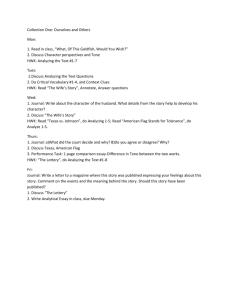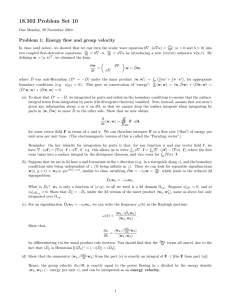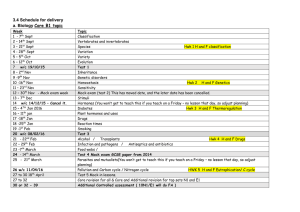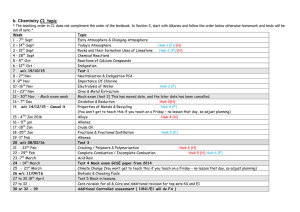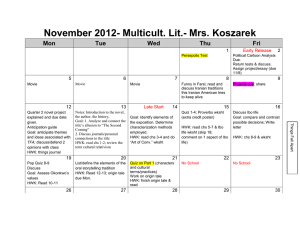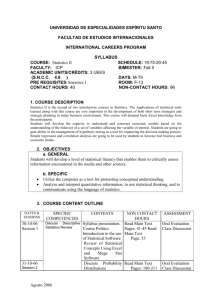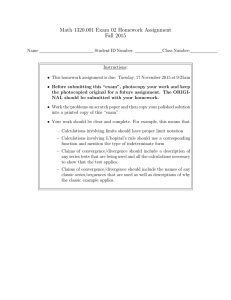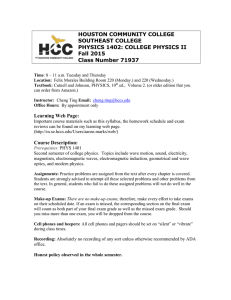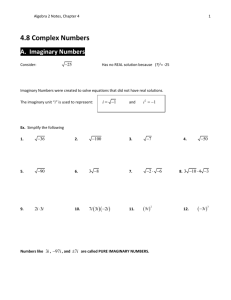Unit 5: Change Through Time
advertisement
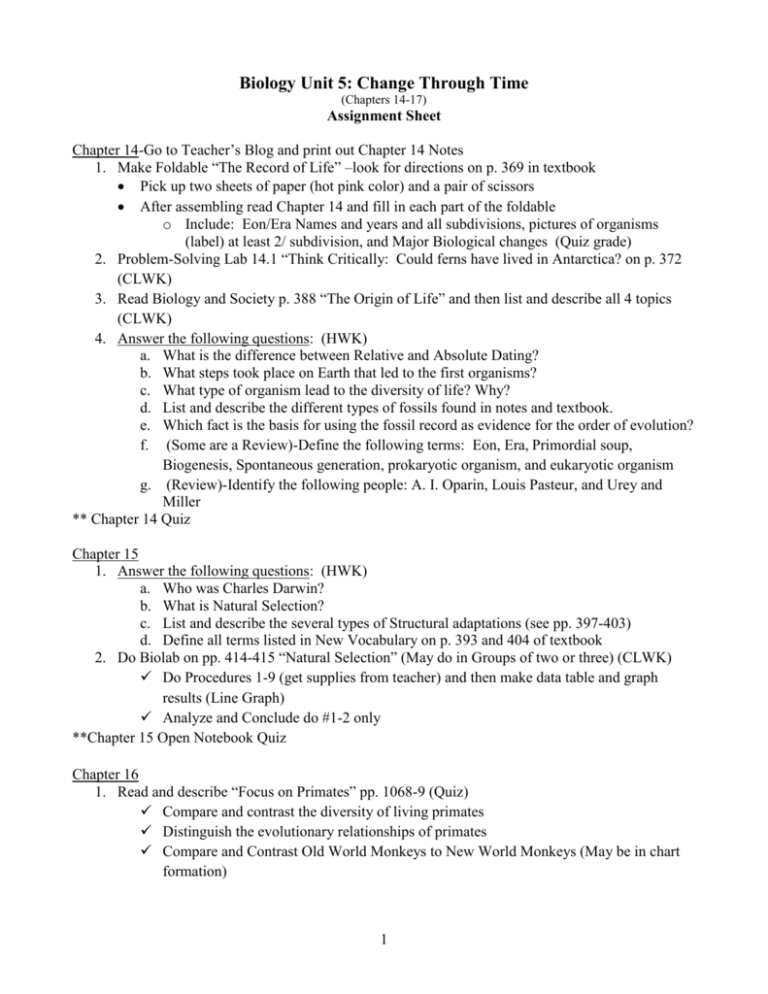
Biology Unit 5: Change Through Time (Chapters 14-17) Assignment Sheet Chapter 14-Go to Teacher’s Blog and print out Chapter 14 Notes 1. Make Foldable “The Record of Life” –look for directions on p. 369 in textbook Pick up two sheets of paper (hot pink color) and a pair of scissors After assembling read Chapter 14 and fill in each part of the foldable o Include: Eon/Era Names and years and all subdivisions, pictures of organisms (label) at least 2/ subdivision, and Major Biological changes (Quiz grade) 2. Problem-Solving Lab 14.1 “Think Critically: Could ferns have lived in Antarctica? on p. 372 (CLWK) 3. Read Biology and Society p. 388 “The Origin of Life” and then list and describe all 4 topics (CLWK) 4. Answer the following questions: (HWK) a. What is the difference between Relative and Absolute Dating? b. What steps took place on Earth that led to the first organisms? c. What type of organism lead to the diversity of life? Why? d. List and describe the different types of fossils found in notes and textbook. e. Which fact is the basis for using the fossil record as evidence for the order of evolution? f. (Some are a Review)-Define the following terms: Eon, Era, Primordial soup, Biogenesis, Spontaneous generation, prokaryotic organism, and eukaryotic organism g. (Review)-Identify the following people: A. I. Oparin, Louis Pasteur, and Urey and Miller ** Chapter 14 Quiz Chapter 15 1. Answer the following questions: (HWK) a. Who was Charles Darwin? b. What is Natural Selection? c. List and describe the several types of Structural adaptations (see pp. 397-403) d. Define all terms listed in New Vocabulary on p. 393 and 404 of textbook 2. Do Biolab on pp. 414-415 “Natural Selection” (May do in Groups of two or three) (CLWK) Do Procedures 1-9 (get supplies from teacher) and then make data table and graph results (Line Graph) Analyze and Conclude do #1-2 only **Chapter 15 Open Notebook Quiz Chapter 16 1. Read and describe “Focus on Primates” pp. 1068-9 (Quiz) Compare and contrast the diversity of living primates Distinguish the evolutionary relationships of primates Compare and Contrast Old World Monkeys to New World Monkeys (May be in chart formation) 1 2. Define the following terms: primates (include characteristics), arboreal, opposable thumb, anthropoids (include characteristics), prehensile tail, Hominoids, bipedal, and Australopithecine (include characteristics) (HWK) 3. MiniLab 16.1 p. 425 (CLWK) 4. Problem-Solving Lab 16.1 on p. 426 (CLWK) 5. Look at Figure 16.9 on p. 430 and explain how the skull and pelvis bones are difference in the Chimpanzee, Ancient Hominid, and a Human. (CLWK) 6. Problem Solving Lab 16.2 on p. 433 (CLWK) 7. In chart formation state the difference between A. afarensis, Homo erectus, Homo sapien, Neandertals, and Cro-Magnons (HWK) Chapter 17 (Go to Teacher’s Blog and print out Chapter 17 PowerPoint entitled “That’s Classified”) 1. Do the following: (HWK) a. Define all New Vocabulary stated on p. 443 and p. 450 b. Explain the difference between Aristotle’s system of classification and Linnaeus’s system of Binomial Nomenclature. 2. MiniLab 17.1 on p. 446 (Need a package of leaves from teacher) (QUIZ) Check shapes, veins, size, and # of lobes then check out findings on Laptop computer and try to identify the leaves 3. Copy Figure 17.5 on p. 449 (HWK) 4. Make a chart on the characteristics of the Six Kingdoms (CLWK) 5. MiniLab 17.2 p. 453 (CLWK) 6. BioLab Chapter 17 pp. 460-461 (CLWK) 7. Do all the activities stated on That’s Classified PowerPoint (CLWK) 8. Scavenger Hunt Activity (CLWK)-ask teacher for directions **Open Notebook Unit 5 Test after Chapter 17 is completed 2
